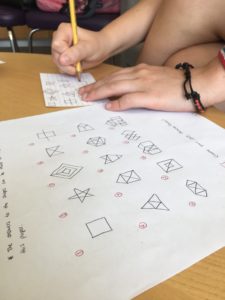Microwaves Saves
History of the Game
I am a lover of late-night snacking, however, my mother is not. Thus, I always find myself sneaking to satisfy my hunger at night. The microwave is a very essential part of my late-night snacking because it enables me to quickly whip something up and rush back to my room. Despite the usefulness of the microwave, it also poses a huge threat to the process – it beeps loudly when it is done heating my food. Because of this shortcoming, I developed a strategy – to stop the microwave when it gets to the 1-second mark in order to have my food well heated as well as prevent the microwave from beeping. In between the start and stop of the microwave, I usually do a number of things in between. This causes me to be in sync with the microwave timer and count down with it as accurately as possible. These activities together form the game Microwave Saves.
The Game
The game, Microwave Saves, challenges the player to complete a number of tasks in the duration set on the microwave. However, the thrill of the game is this: the player is supposed to stop the microwave at the 1-second mark in order to prevent the microwave from beeping.
To add some context, the food being heated is a midnight snack which is assumed to be forbidden. This is why the player must prevent the microwave from beeping in order not to wake any adults or killjoys.
This game was played in my room lounge since it is equipped with a functioning microwave. I invited some friends to play the game. During the game, I set the following ground rules:
- The item should be heated for a maximum of 1 minute.
- The player should enter one of the two rooms in the suite after setting the timer in order to eliminate the possibility of the player glancing at the timer during the heating process.
Despite the fact that there were ground rules, I decided to be flexible and allow the players to choose their own set of tasks to complete as the microwave heated the food. I did this because this was a test run and so I did not want to overly complicate the game for now. Hopefully, future models will incorporate more specified and elaborate tasks
As the game was being played, I believe everything went according to plan. I was very satisfied with the outcome and so were the players.
Even though Microwave Saves is not a very flexible game, I feel as though players can be creative with the different set of tasks they perform during the heating process. They could increase the number of tasks or increase the difficulty of the tasks they perform.


 Stuck in a rut? Can’t seem to concentrate on your work? Play Mult, a game tailored to the individual. Before beginning, identify your base task, such as doing your laundry, boiling water for tea, or microwaving food. If there is no base task, click the ‘Just for Fun’ option in the Mult mobile app and set the timer according to your needs.Using the app, create your to do list for the day and assign points to each task. These points should reflect your belief in the underlying difficulty of each task.
Stuck in a rut? Can’t seem to concentrate on your work? Play Mult, a game tailored to the individual. Before beginning, identify your base task, such as doing your laundry, boiling water for tea, or microwaving food. If there is no base task, click the ‘Just for Fun’ option in the Mult mobile app and set the timer according to your needs.Using the app, create your to do list for the day and assign points to each task. These points should reflect your belief in the underlying difficulty of each task.








